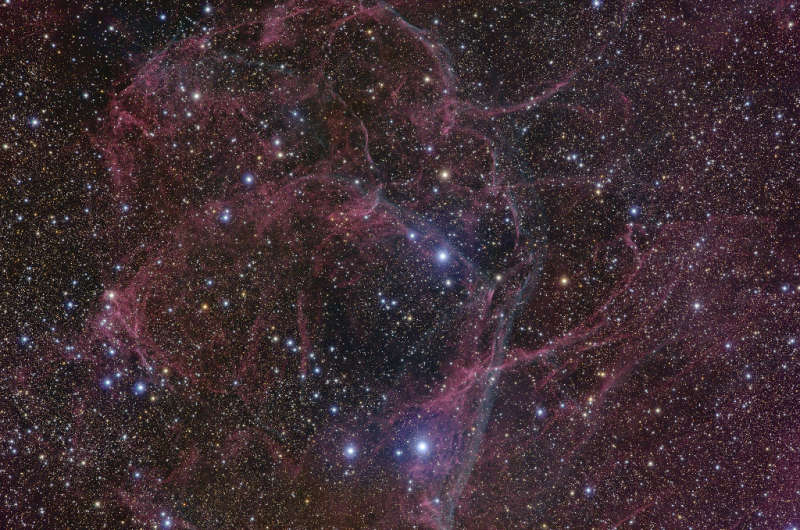
|
Credit & Copyright: CEDIC Team - Processing:
Wolfgang Leitner
Explanation:
The plane of our Milky Way Galaxy runs through this
complex
and beautiful skyscape.
At the northwestern edge of the constellation
Vela
(the Sails) the telescopic frame is over 10 degrees wide,
centered on the brightest glowing filaments of the
Vela
Supernova Remnant, an expanding debris cloud from the
death explosion of a massive star.
Light from the supernova explosion
that created the Vela remnant
reached Earth about 11,000 years ago.
In addition to the shocked filaments of glowing gas, the cosmic
catastrophe also left behind an incredibly dense,
rotating stellar core, the Vela Pulsar.
Some 800 light-years distant, the Vela remnant is likely
embedded
in a larger and older supernova remnant, the
Gum Nebula
|
January February March April May June July August September October November December |
| ||||||||||||||||||||||||||||||||||||||||||||||||
NASA Web Site Statements, Warnings, and Disclaimers
NASA Official: Jay Norris. Specific rights apply.
A service of: LHEA at NASA / GSFC
& Michigan Tech. U.
Based on Astronomy Picture
Of the Day
Publications with keywords: Vela - supernova remnant
Publications with words: Vela - supernova remnant
See also:
- APOD: 2025 October 1 Á NGC 6960: The Witchs Broom Nebula
- APOD: 2025 June 9 Á Between Scylla and Charybdis: A Double Cosmic Discovery
- Supernova Remnant Cassiopeia A
- APOD: 2025 January 8 Á Supernova Remnants Big and Small
- APOD: 2024 September 18 Á The Mermaid Nebula Supernova Remnant
- APOD: 2024 April 16 Á Filaments of the Vela Supernova Remnant
- APOD: 2024 April 3 Á Unusual Nebula Pa 30
